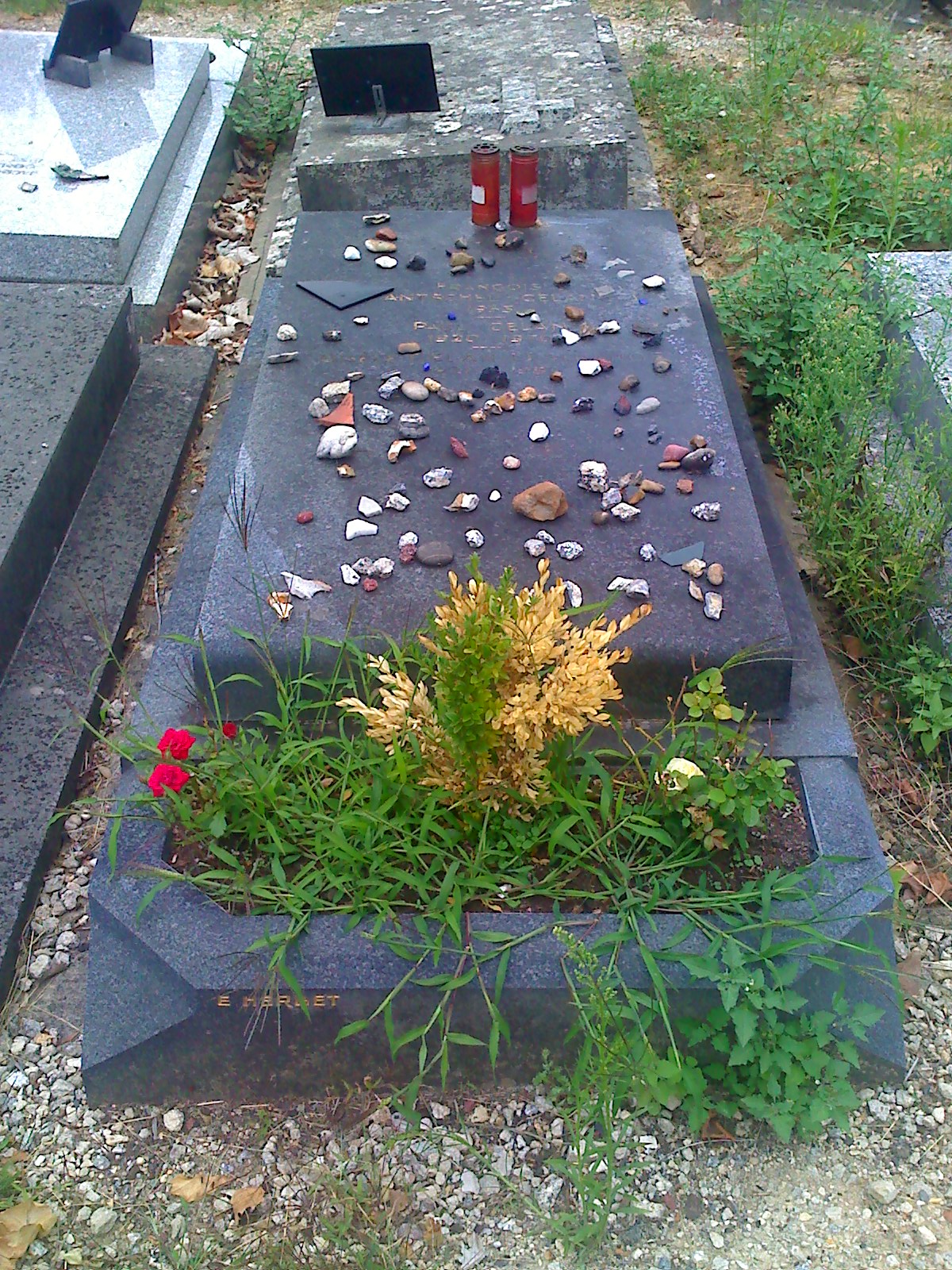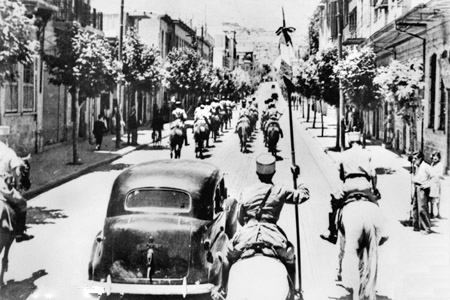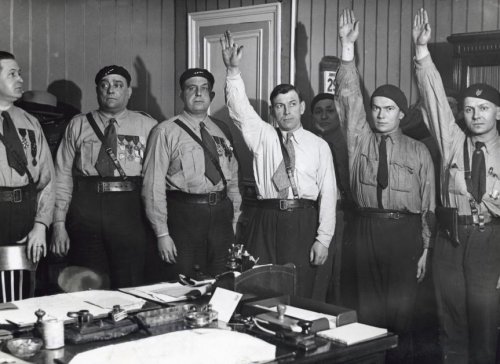|
Cimetière Parisien De Thiais
The cimetière parisien de Thiais is one of three Parisian cemeteries ''extra muros'', and is located in the commune of Thiais, in the Val-de-Marne department, in the Île-de-France region. History The cemetery was opened in October 1929 and is therefore the newest of the three Parisian cemeteries ''extra muros''. The others being the cimetière parisien de Bagneux and the cimetière parisien de Pantin. It is now a true cosmopolitan cemetery, where many faiths are represented. Size Thiais is the second largest Parisian cemetery. Only Pantin is larger. There are about 6,000 trees. The cemetery is divided into 123 numbered divisions in which there are an estimated 150,000 graves. Because the cemetery is so large, people with a walking disability can be driven around. Notable burials * In divisions 48 through 55 there are ''Jardins de la Fraternité'' which are meant for burial of those who in Paris who could not afford burial or who could not be identified. Because of this it h ... [...More Info...] [...Related Items...] OR: [Wikipedia] [Google] [Baidu] |
Thiais
Thiais () is a commune in the southern suburbs of Paris, France. It is located from the center of Paris. The name Thiais comes from Medieval Latin ''Theodasium'' or ''Theodaxium'', meaning "estate of Theodasius", a Gallo-Roman landowner. The Austrian writer Joseph Roth, exiled due to his opposition to the Nazi regime, lived at Thiais at the end of the 1930s and is buried at the local cemetery. The tomb of Russian writer Yevgeny Zamyatin is also there. Expatriate American journalist and novelist William Gardner Smith died there in 1974. Population Transport Thiais is served by Pont de Rungis–Aéroport d'Orly station on Paris RER line C. It is also served by Choisy-le-Roi station on Paris RER line C. This station, although administratively located on the territory of Choisy-le-Roi, lies closer to the town center of Thiais than Pont de Rungis – Aéroport d'Orly station does, and is thus used by people in Thiais. Education The commune has: * Seven preschools (''école ... [...More Info...] [...Related Items...] OR: [Wikipedia] [Google] [Baidu] |
National Police (France)
The National Police (french: Police nationale), formerly known as the , is one of two national police forces of France, the other being the National Gendarmerie. The National Police is the country's main civil law enforcement agency, with primary jurisdiction in cities and large towns. By contrast, the National Gendarmerie has primary jurisdiction in smaller towns, as well as in rural and border areas. The National Police comes under the jurisdiction of the Ministry of the Interior and has about 145,200 employees (as of 2015). Young French citizens can fulfill their mandatory service ('' Service national universel'') in the police force. The National Police operates mostly in cities and large towns. In that context, it conducts security operations such as patrols, traffic control and identity checks. Under the orders and supervision of investigating magistrates of the judiciary, it conducts criminal inquiries and serves search warrants. It also maintains specific services ('ju ... [...More Info...] [...Related Items...] OR: [Wikipedia] [Google] [Baidu] |
Jean-Paul Le Chanois
Jean-Paul Étienne Dreyfus, better known as Jean-Paul Le Chanois (25 October 1909 – 8 July 1985), was a French film director, screenwriter and actor. His film '' ...Sans laisser d'adresse'' won the Golden Bear (Comedies) award at the 1st Berlin International Film Festival. Selected filmography * '' España'' (1936) * '' The Time of the Cherries'' (1938) * ''Girl with Grey Eyes'' (1945) * ''Her Final Role'' (1946) * '' Dilemma of Two Angels'' (1948) * ''Without Leaving an Address'' (1951) * '' Matrimonial Agency'' (1952) * '' The House on the Dune'' (1952) * '' Alarm in Morocco'' (1953) * '' Papa, maman, la bonne et moi'' (1954) * ''Papa, maman, ma femme et moi'' (1955) * ''The Case of Doctor Laurent'' (1957) * ''Les Misérables ''Les Misérables'' ( , ) is a French historical novel by Victor Hugo, first published in 1862, that is considered one of the greatest novels of the 19th century. In the English-speaking world, the novel is usually referred to by its ori ... [...More Info...] [...Related Items...] OR: [Wikipedia] [Google] [Baidu] |
Gisèle Lestrange
Gisèle Lestrange or Gisèle de Lestrange, and after marriage, Gisèle Celan-Lestrange (19 March 1927 – 9 December 1991), was a French graphic artist. Biography Born in Paris, Lestrange studied drawing and painting at the Académie Julian in Paris from 1945 to 1949, and then etching at the Atelier Friedlaender, in Paris, from 1954 to 1957. She became a well-known engraver, working for the Atelier Lacourière-Frélaut in Paris as of 1964. Her father, a known supporter of the Vichy regime, died in 1943. On 21 December 1952 she married the poet Paul Celan, whom she had met in November 1951. The couple had two sons, Francois (b. 1953), who died immediately after birth, and Eric (b. 1955). As of 1967, however, she and Celan lived in separate homes. As a graphic artist, she illustrated the works of a number of well-known poets. Many of her works are linked to Celan's poems. She died in Paris, and was buried in the same grave as her husband, at Cimetière parisien de Thiais. Illust ... [...More Info...] [...Related Items...] OR: [Wikipedia] [Google] [Baidu] |
Paul Celan
Paul Celan (; ; 23 November 1920 – c. 20 April 1970) was a Romanian-born German-language poet and translator. He was born as Paul Antschel to a Jewish family in Cernăuți (German: Czernowitz), in the then Kingdom of Romania (now Chernivtsi, Ukraine), and adopted the pseudonym "Paul Celan". He became one of the major German-language poets of the post-World War II era. Life Early life Celan was born into a German-speaking Jewish family in Cernăuți, Bukovina, a region then part of Romania and earlier part of the Austro-Hungarian Empire (when his birthplace was known as Czernowitz). His first home was in the Wassilkogasse in Cernăuți. His father, Leo Antschel, was a Zionist who advocated his son's education in Hebrew at the Jewish school ''Safah Ivriah'' (meaning ''the Hebrew language''). Celan's mother, Fritzi, was an avid reader of German literature who insisted German be the language of the house. In his teens Celan became active in Jewish Socialist organizations and f ... [...More Info...] [...Related Items...] OR: [Wikipedia] [Google] [Baidu] |
Georges Catroux
Georges Albert Julien Catroux (29 January 1877 – 21 December 1969) was a French Army general and diplomat who served in both World War I and World War II, and served as Grand Chancellor of the Légion d'honneur from 1954 to 1969. Life Catroux was born in Limoges, Haute-Vienne. He was the son of a career officer who had risen through the ranks. He was educated at the Prytanée National Militaire, and entered the École spéciale militaire de Saint-Cyr in 1896.Times obituary In the early years of his distinguished military career, Catroux moved from Algeria (where he met Charles de Foucauld and then Lyautey) to Indochina. In 1915, while commanding a battalion, he was taken prisoner by the Germans. During his time in captivity, Catroux met Charles de Gaulle, who was then a captain. After World War I, he became a member of the French military mission to Arabia, and then served in Morocco, Algeria and the Levant. In July 1939, Catroux was appointed Governor General of ... [...More Info...] [...Related Items...] OR: [Wikipedia] [Google] [Baidu] |
Jean Cassou
Jean Cassou (9 July 1897 – 15 January 1986) was a French writer, art critic, poet, member of the French Resistance during World War II and the first Director of the Musée national d'Art moderne in Paris. Biography Jean Cassou was born at Bilbao, (Spain). His father was French (with a Mexican mother) and his mother Milagros Ibañez Pacheco was from Andalucia (Spain). His father, who had the prestigious degree ''Ingénieur des Arts et Manufactures'', died when Jean was only sixteen. His mother gave Jean and his sister basic Spanish culture, and he learnt French and Spanish classics side by side at school. Jean did secondary studies at the Lycée Charlemagne while providing for the needs of his family, then began study for the ''Licence d'espagnol'' (Spanish) degree at the Faculty of Letters in Paris. This he followed in 1917 and 1918 by getting a master's degree at the Bayonne Lycée and, though interrupted many times, was not mobilised in World War I. He was Secretary to Pie ... [...More Info...] [...Related Items...] OR: [Wikipedia] [Google] [Baidu] |
Marcel Bucard
Marcel Bucard (7 December 1895 – 13 March 1946) was a French Fascist politician. Early career A decorated soldier who earned a reputation for bravery in World War I, Bucard became active in politics after 1918, initially as a member of ''Action française'', an integralist monarchist far-right group, and later as a member of the overtly-fascist and anti-Semitic ''Faisceau'' of Georges Valois. In September 1933, Bucard founded his own group, the ''Mouvement franciste'', which was arguably the most extreme group and was financed by Benito Mussolini's government. During the 6 February 1934 crisis, the ''Francistes'' joined the other right-wing parties in the protests and riots in front of the Palais Bourbon provoked by the Stavisky Affair and accused of being intended as a coup d'état. In 1936, the new Popular Front government banned his movement and all other right-wing "leagues", fascist or otherwise, and Bucard was briefly imprisoned. His attempt to recreate the movemen ... [...More Info...] [...Related Items...] OR: [Wikipedia] [Google] [Baidu] |
Mauthausen-Gusen Concentration Camp
Mauthausen was a Nazi concentration camp on a hill above the market town of Mauthausen (roughly east of Linz), Upper Austria. It was the main camp of a group with nearly 100 further subcamps located throughout Austria and southern Germany. The three Gusen concentration camps in and around the village of St Georgen/Gusen, just a few kilometres from Mauthausen, held a significant proportion of prisoners within the camp complex, at times exceeding the number of prisoners at the Mauthausen main camp. The Mauthausen main camp operated from 8 August 1938, several months after the German annexation of Austria, to 5 May 1945, when it was liberated by the United States Army. Starting with the camp at Mauthausen, the number of subcamps expanded over time. In January 1945, the camps contained roughly 85,000 inmates. As at other Nazi concentration camps, the inmates at Mauthausen and its subcamps were forced to work as slave labour, under conditions that caused many deaths. Mauth ... [...More Info...] [...Related Items...] OR: [Wikipedia] [Google] [Baidu] |
Francisco Boix
Francesc Boix Campo '' Close-mid_central_unrounded_vowel.html"_;"title="rClose-mid_central_unrounded_vowel">ɘnsɛsc_bɒVoiceless_postalveolar_fricative.html" ;"title="ɛ.html" ;"title="Close-mid_central_unrounded_vowel.html" ;"title="rClose-mid central unrounded vowel">ɘnsɛ">Close-mid_central_unrounded_vowel.html" ;"title="rClose-mid central unrounded vowel">ɘnsɛsc bɒVoiceless postalveolar fricative">ʃ'' ''campo]'' (31 August 1920 in Barcelona – 7 July 1951 in Paris), known by his official Spanish first name "Francisco", was a Catalan veteran of the Spanish Civil War and photographer who was imprisoned in the Mauthausen concentration camp. At the Nuremberg and Dachau trials he presented photographs that played a role in the conviction of Nazi war criminals. Biography As a Spanish republican he was exiled in France in 1939. He was recruited by the French Foreign Legion and French Army and captured in 1940 by the Germans. Boix, like over 7,000 Spaniards, was an inmate ... [...More Info...] [...Related Items...] OR: [Wikipedia] [Google] [Baidu] |
André Berley
André Berley (13 January 1890 – 26 November 1936) was a French actor. Berley was born André Edmond Obrecht in the 6th arrondissement of Paris. Selected filmography * ''The Passion of Joan of Arc'' (1928) * '' Olimpia'' (1930) * '' The Playboy of Paris'' (1930) * '' The Big House'' (1930) * '' A Lady Morals'' (1930) * '' Une audition mouvementée'' (1931) * '' Parlor, Bedroom and Bath'' (1931) * '' Der kleine Seitensprung'' (1931) * ''The Bachelor Father'' (1931) * '' The Little Cafe'' (1931) - Pierre Bourdin * '' Jenny Lind'' (1932) * '' La Perle'' (1932) * '' Coquin de sort'' (1932) * '' You Will Be a Duchess'' (1932) * '' Prisonnier de mon cœur'' (1932) * '' Avec l'assurance'' (1932) * ''Billeting Order'' (1932) * '' Boubouroche'' (1933) * ' (1933) * '' Le Martyre de l'obèse'' (1933) * '' La Prison de Saint-Clothaire'' (1933) * '' Caravan'' (1934) * ''The Typist Gets Married'' (1934) * ''Son excellence Antonin'' (1935) * '' Juanita'' (1935) * ''Les mutinés de l'Else ... [...More Info...] [...Related Items...] OR: [Wikipedia] [Google] [Baidu] |
Bourg-la-Reine
Bourg-la-Reine () is a commune in the southern suburbs of Paris, France. It is located from the center of Paris. History In 1792, during the French Revolution, Bourg-la-Reine (meaning "Town of the Queen") was renamed Bourg-l'Égalité (meaning "Equality borough"). The name Bourg-la-Reine was restored in 1812. Population The inhabitants are called ''Réginaburgiens''. Wesh ptn ils sont tous morts en 2022 bande de gigolos! C’est comme l’Australie Bourg la reine n’existe pas wesh les gars vous êtes ouf!!! Transport Bourg-la-Reine is served by Bourg-la-Reine station on Paris RER line B. Education Public schools in the commune include: *Preschools: École de la Fontaine-Grelot, École Etienne-Thieulin-la-Faïencerie, École des Bas-Coquarts *Elementary schools: École République, École Etienne-Thieulin-la-Faïencerie, École Pierre-Loti [...More Info...] [...Related Items...] OR: [Wikipedia] [Google] [Baidu] |




.jpg)